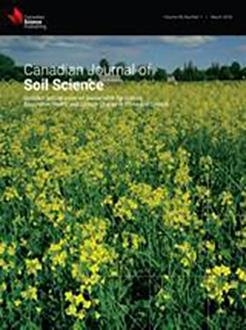Microbial research for maintaining soil productivity, health, and environment as well as for ecosystem function has been one of the main research focuses in the Department of Renewable Resources (formerly Department of Soil Science) during the last 100 yr. In recent years, microbial research has been expanded to effectively reclaim disturbed land, remediate contaminated sites, and manage soft sediments such as huge volumes of oil sands tailings. This article highlights the microbial processes in tailings ponds that can affect strategies to manage growing inventory of oil sands tailings and reduce associated environmental footprint. Enormous volumes of fluid fine tailings produced during bitumen extraction from oil sands are retained in tailings ponds. Some tailings streams contain residual labile hydrocarbons originated from the hydrocarbon solvents used in the extraction process. Indigenous microorganisms acclimated to the pond environment metabolize certain fractions of the fugitive labile hydrocarbons into biogenic greenhouse gases (GHG) such as methane (CH4) and carbon dioxide (CO2). Long-term (1–7 yr) biodegradation studies conducted using mature fine tailings (MFT) collected from different tailings ponds reveal that the microorganisms sequentially and preferentially biodegrade hydrocarbons under methanogenic conditions. The stoichiometric mathematical model developed on these biodegradation studies can predict GHG emissions from tailings ponds. Production of biogenic gases also affects the porewater and solid-phase chemistry of MFT and accelerates their de-watering and consolidation during active methanogenesis, which is beneficial for recovery of porewater for reuse in the bitumen extraction process and for effective reclamation of consolidated material.
How to translate text using browser tools
28 February 2020
Linking hydrocarbon biodegradation to greenhouse gas emissions from oil sands tailings and its impact on tailings management
Tariq Siddique,
Alsu Kuznetsova
ACCESS THE FULL ARTICLE
It is not available for individual sale.
This article is only available to subscribers.
It is not available for individual sale.
It is not available for individual sale.
greenhouse gas production
hydrocarbon biodegradation
Methanogenesis
oil sands tailings
tailings consolidation





